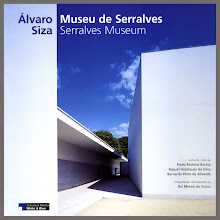..

Working on assignment for Editorial Blau, I came to know this absolutely wonderful project from 1912, in the small town of Sintra.
This is actually one of the houses that Raúl Lino (1879 - 1974) built for himself, and is known as the "Casa do Cipreste", a true icon of the portuguese architecture (maybe I should say "in Portugal" instead... In fact, I think that it looks more german than portuguese, what is natural, thinking that Lino studied in Germany).







Being considered by some to be a controversial personality in our 20th century cultural life, Raúl Lino cannot be ignored for sure. His importance and influence still lasts until today.
"Casa do Cipreste" is definitely a magic place full of charm and warmth, a place of outstanding beauty and harmony.
A place that I would undoubtedly love to call home!

















The rectangular images were shot using a Sinar F2 camera in 9x12 cm/4x5 inches, equiped with various lenses manufactured by Schneider in Germany.
The square photographs were shot with a Hasselblad camera in 6x6, using Carl Zeiss lenses (Distagon, Planar and Sonnar types), also made in Germany.
Lighting equipment was made by Hensel in Würzburg, Germany.
Light meters by Sekonic and Minolta.
Ektachrome film by Kodak.
I would like to dedicate this post to the architect Luiz Trigueiros from Editorial Blau, a person to whom I owe a lot in personal and professional terms. He was the one who brought me to professional architectural photography, when I returned home from Germany in 1990. After some small misunderstandings that lasted for some time, we are now on good terms, and I was happy to see him and his wife again.
P.S.: Raúl Lino also designed in 1925 Teatro Curvo Semedo in Montemor-o-Novo, wich you might know from some other posts that I have done.
..








































































+copy.jpg)
+copy.jpg)
+copy.jpg)
+copy.jpg)
+copy.jpg)
+copy.jpg)